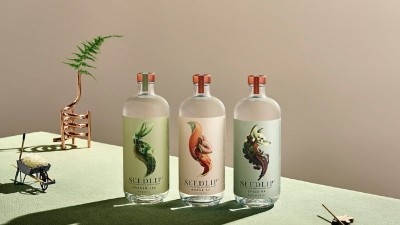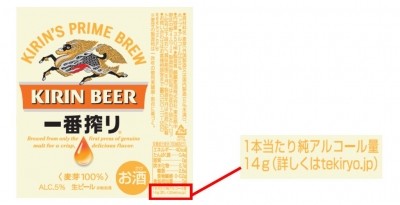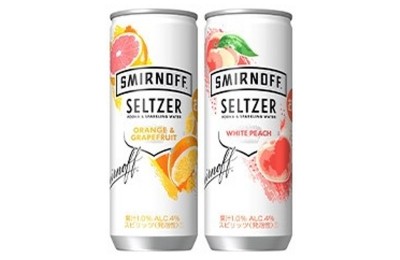Brand-retailer collaboration crucial to tap trends driving alcohol purchases among younger consumers – Brown Forman, Distell

Since the COVID-19 pandemic hit the Asia Pacific region over two years ago, many food and beverage sectors have seen a shift of consumer interest towards online and off-trade consumption, with trends such as localised products and unique, experimental items rising to lead consumer purchasing decisions.
The rise of the younger consumer demographic has also seen a rise when it comes to alcohol purchasing, due to various reasons including higher tendency to adopt the e-commerce mode of purchasing, as well as emerging as the major group making purchases from the travel retail sector.
“Younger consumers all the way from their twenties to their forties are the ones with a stronger sense of discovery, which they are applying significantly to their alcohol purchasing where they are more keen now than ever to try new brands and products, with experimentation really driving them here,” alcoholic beverage manufacturer Brown Forman Vice President Aude Bourdier said during a ‘Changing Dynamics in Wine and Spirits’ panel discussion session held as part of the recent Tax Free World Association APAC Live event.
The firm produces several well-known brands including Jack Daniells and Woodford Resevere.
“This is being observed both in travel and regular alcohol retail, both in on-trade and off-trade, and companies need to adapt to ensure they can meet these new demands.”
This opinion was seconded by alcohol multinational Distell’s Head of Europe Luke Maga, who highlighted that brands needed to innovate and also work more closely with retailers in order to attract these ‘new consumers’ into stores to make purchases.
“Engagement with retailers is crucial as it will make all the difference in having a display attractive enough to give consumers a reason not to simply walk past the store without making a purchase or at least taking a second look,” he said.
“It is also very important for everyone in the alcohol industry to take a closer look at who these new consumers are and how to draw them in – for instance, in travel retail, we know that most of the consumers that are still travelling today are younger and more interested in novel unique products, so we need to navigate a challenging supply chain to provide them with what they want.”
Retailers in the discussion also agreed with this approach, such as Lotte Duty Free Oceania CEO and Director Stephen Timms who described how craft products are now seeing a boom due to this trend.
“In terms of providing novel and unique products, we are now working with local craft manufacturers to produce and sell products that are unique, different and appealing to younger consumers,” he said.
“This is a very big trend, especially in Australia and New Zealand, and is being seen all throughout the alcohol sector – and where a few years ago craft was generally bigger for beer, now quite a lot of spirit firms are also doing the same.”
Within the trend of satisfying consumer demand for unique and novel products, the panel stressed that localisation has become an increasingly important way to do this.
“For example, we’re now seeing more and more interesting gins appearing in each country, each with its own story and production method or ingredients that reflects the culture of the market it was produced in,” wines and spirits consultancy Duty Free Global Founder Barry Geoghegan added.
“Markets like Australia, New Zealand and Japan are particularly strong in this, and it is this creation of regional or national flavour profiles that really hits the right spot with younger consumers looking for new things to try – so it would really be a great strategy for brands and retailers in the different markets to collaborate and find ways to reflect all the Asian cultures in all the various types of stores.
“The key to attracting this crowd is really ensuring that you have the assortment that is right and relevant to them, that Is special enough to make them stop and take interest – and to do that, it might be that brands have to reinvigorate their portfolio assortments, or retailers might have to reinvigorate their display assortments.”
For travel retail in particular, a huge adjustment and transformation has had to be made to assortments relative to pre-pandemic times, particularly with a lack of Chinese travellers around the world which were previously a major source of income for the sector.
“For so long, the entire sector was basically just focused on this group, but this is now changing due to the pandemic and we now have to evolve and relook at our range to ensure things are right for attracting new consumers,” Maga added.
Wine as an untapped craft sector
The panel also discussed wine as a relatively more challenging sector in terms of developing regional or local craft alternatives, mostly due to climate and geographical challenges.
“Not all markets are able to make wine especially if they don’t grow grapes, so it is harder for the sector to benefit from the craft side – though I will say there are definitely still some great products out there still undiscovered,” said Geoghegan.
“That said, for the wine industry to really maximise its potential in this area, I would say a lot more training and knowledge is required – Australia and New Zealand are perhaps more adept at presenting their wines with a localised branding, but most others tend to market themselves from a more international perspective, and more education in this area could lead to new uniquely localised wine creations.”









